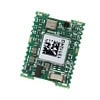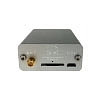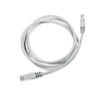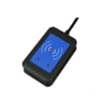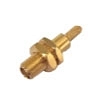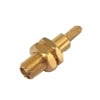Antennas - a conductive element used to convert the energy supplied by the transmitter into the energy of electromagnetic waves radiated into space. Your entire antenna system must be adapted to emit as much energy as possible in the most efficient way.
The antenna is reciprocal. It is therefore capable of both emitting and receiving energy. Whether the antenna will be used as a receiver or transmitter, is determined by its properties. A suitable antenna is chosen according to the parameters with regard to the area of use.
In terms of placement, we divide the antennas into indoor, outdoor or antennas that can with stand extreme conditions. Our portfolio includes, for example, WiFi antennas that can be connected to routers, cellular antennas for cellular network reception, GPS antennas for your car or amplifiers for Tracing applications, and even antennas for your DVB-T2 television. In addition to the choice of technology, we also offer a wide range of mounting options, various connectors and any length of antenna power supply. You can find screw, mounting, adhesive, solder and magnetic antennas in our portfolio.
Antenna key parameters, that we deal with are:
The antenna gain mainly shows its efficiency. The gain is always related to the reference emitter. If the emitter is isotropic, we are talking about the absolute gain in dBi. Furthermore, we can talk about the relative gain (given in dBd), which is measured against a reference antenna (e.g. a half-wave dipole). The purpose of the measurement is to determine how many times more voltage is measured at the terminals of the directional antenna than at the terminals of the reference antenna.
The directionality of the antenna is presented by a radiation pattern. The radiation pattern is actually three-dimensional, but in practice, in most cases, it is represented by a 2D spatial section in a vertical or horizontal plane. A very important parameter from this antenna is called emission angle of the antenna. It is the angle of the emission maximum which is defined by two values which correspond to a decrease in the maximum field strength by 3 dB.
Directional antennas (e.g. Yagi) achieve higher gain values of 10-14 dBi but are more structurally demanding. Omni directional antennas (e.g. rod antennas) are less profitable most often around 3 dBi. The resulting gain can also reach negative values especially in miniature versions of antennas such as microstrip etc. These values are sufficient for many technologies.
The impedance of antennas is most often 50/75 Ω and is related to another very important parameter, SWR (standing wave ratio). The aim is to achieve equality between the antenna input impedance and the impedance of the wire. Under these ideal conditions SWR will be 1:1. Only then does the maximum energy transfer between the line and the load occur.
The working width of the frequency band limits the antenna in terms of technology in which the antenna will work. The WiFi, GSM, UMTS, LTE, RFID, 5G, NBIoT, DVB-T / T2, GPS, Glonass, etc. technologies work in certain frequency bands of on which your antenna should be designed.



